What Is The Best Wax For Candles? Soy vs. Beeswax vs. Paraffin
Decide for yourself which is the best wax for candles after comparing paraffin vs. soy wax vs. beeswax side by side.
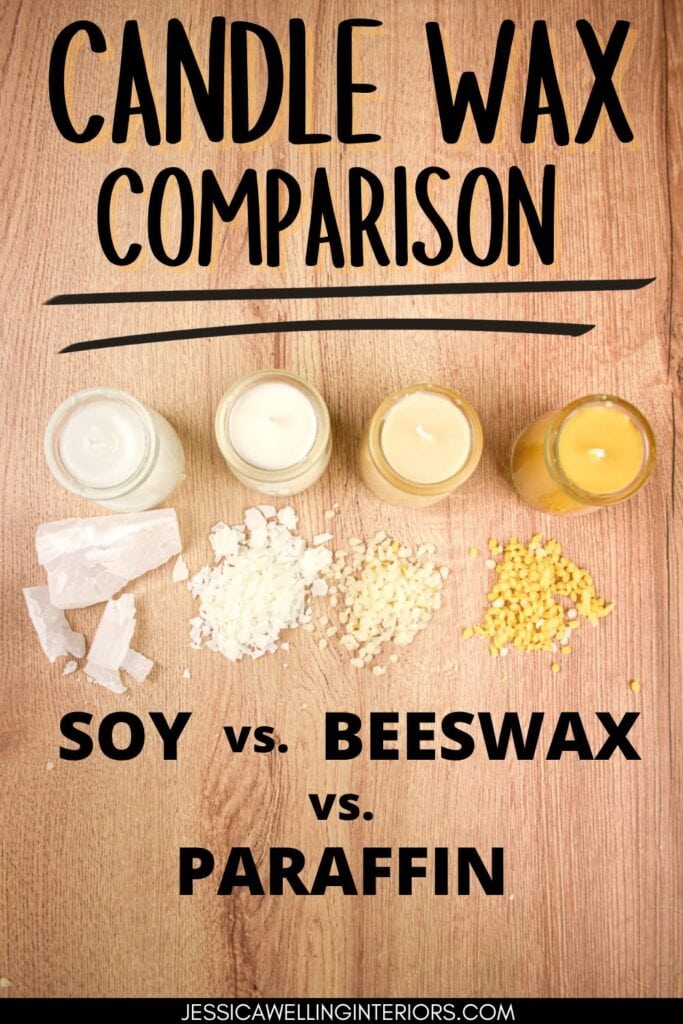
When I first started making my own candles, I had a lot of questions. One of the first things I needed to decide was which type of wax to use.
Natural soy candles are all the rage, but they do have their limitations. Paraffin wax is popular, but has been getting some bad press lately. And what about beeswax?
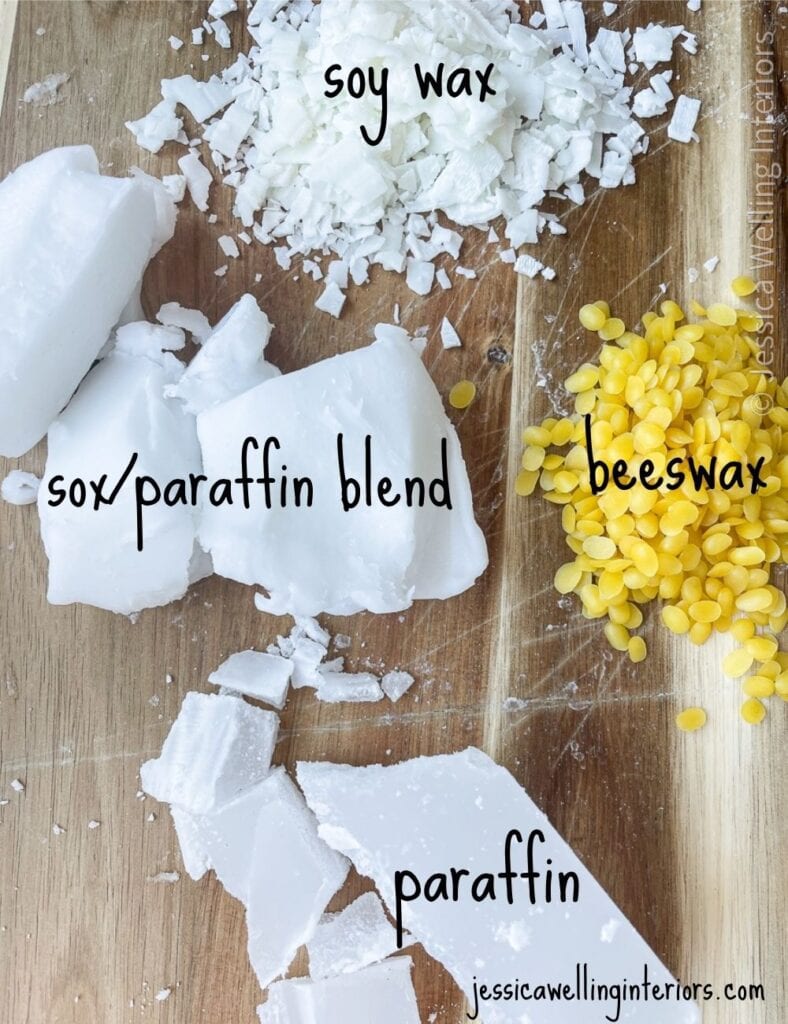
So let’s talk about the different varieties of wax for candle making, the pros and cons of each, and where you can find the best inexpensive candle wax when you’re getting started. Then you can decide which type of wax is best for your purposes.
Paraffin Wax
We’ll start with paraffin since it’s the most common, oldest, and well-known variety of candle wax on the market. If you want to make tallow candles out of beef fat (Little House On the Prairie style), this may not be your article.
What is Paraffin Wax?
Paraffin wax is a byproduct of the petroleum refining process. It’s what most traditional and commercial candles are made from because it’s inexpensive, readily available, and relatively easy to work with.
It’s also versatile and more chemically stable than other more natural waxes. This means it won’t diminish in quality over time, change color, etc. A paraffin candle is ready to use as soon as the wax has cooled, meaning it doesn’t need to cure for a few weeks in order to properly release its fragrance.
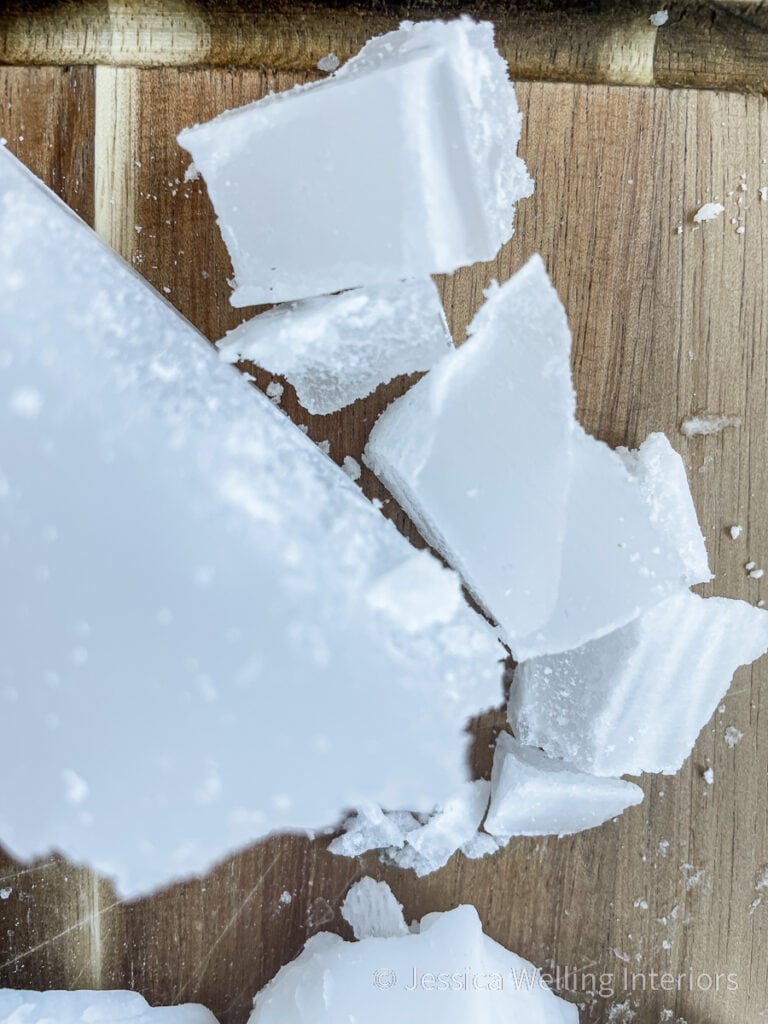
Paraffin wax most often comes in large blocks, and you can cut it into chunks with a kitchen knife to make the pieces more manageable and easier to melt.
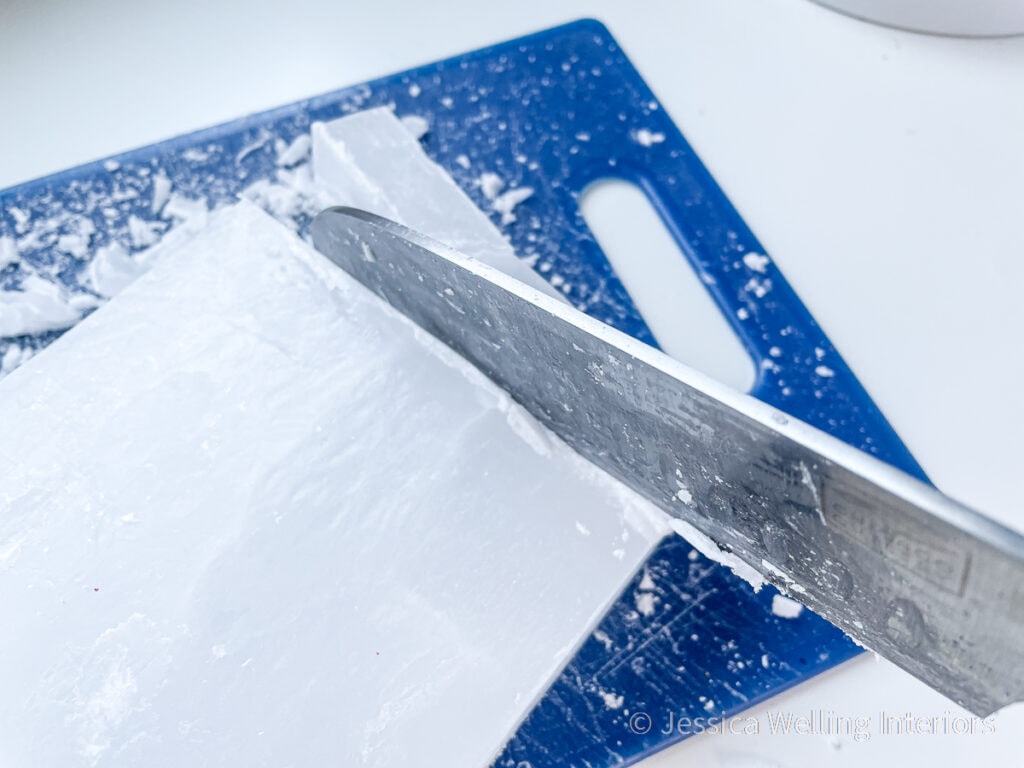
It’s translucent in its solid form, and clear when melted (see below).
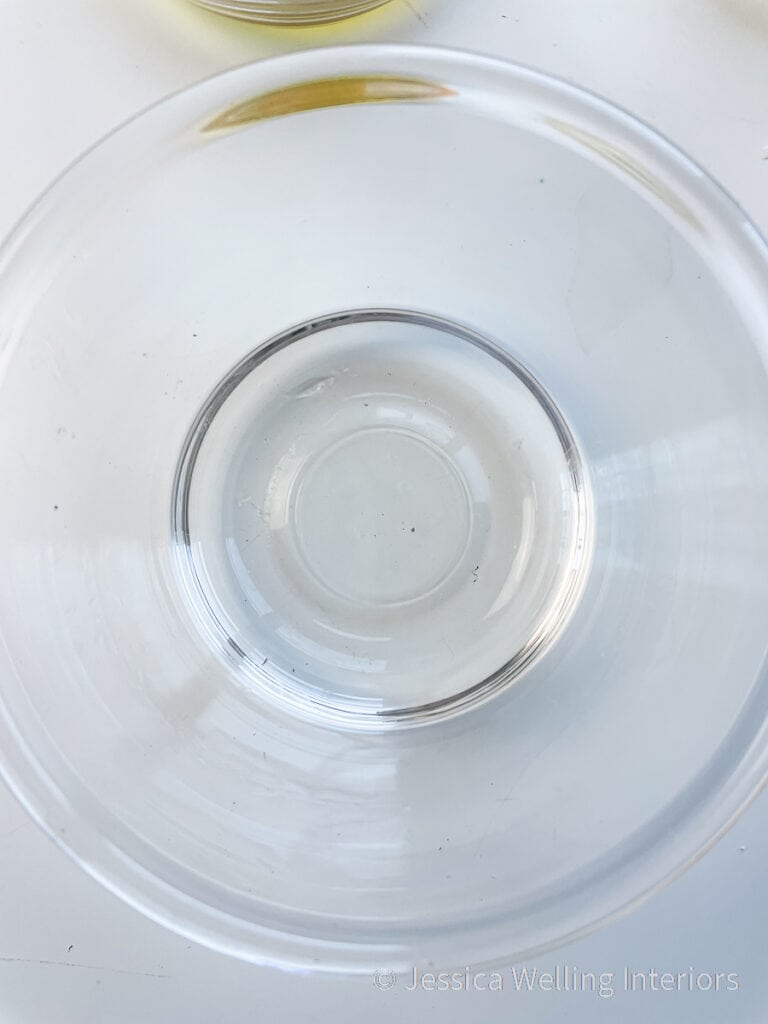
How to Melt Paraffin Wax
The most common method is to melt paraffin wax in a double-boiler. I like to use a metal pitcher like this one inside a pot of hot water on the stovetop.
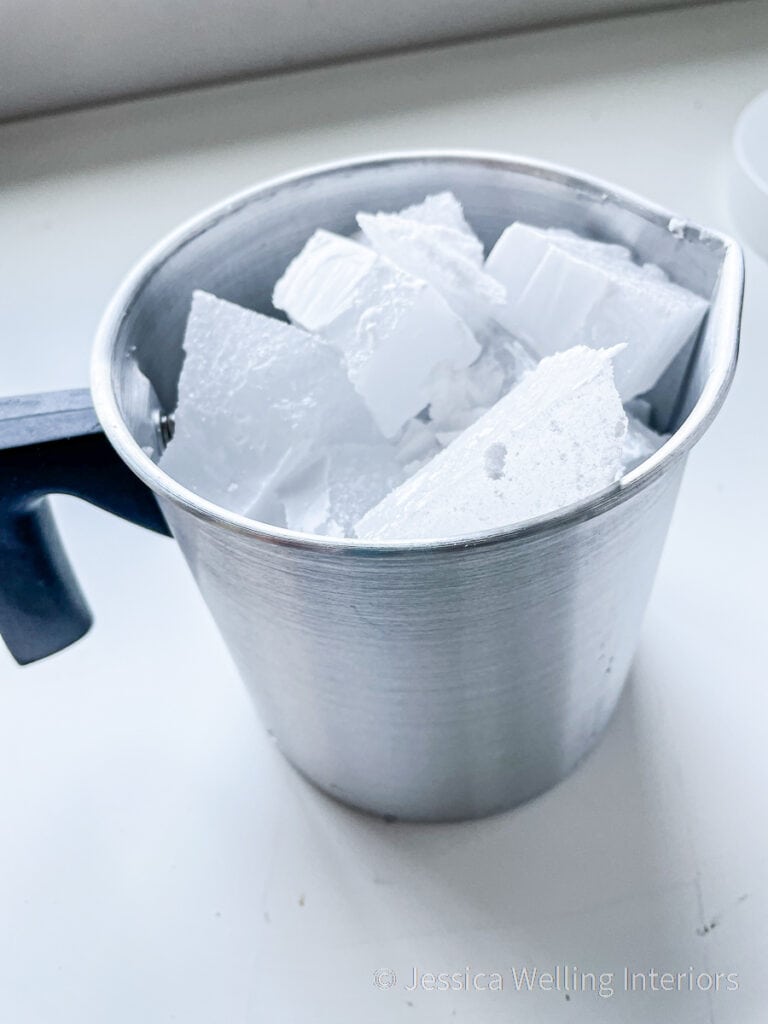
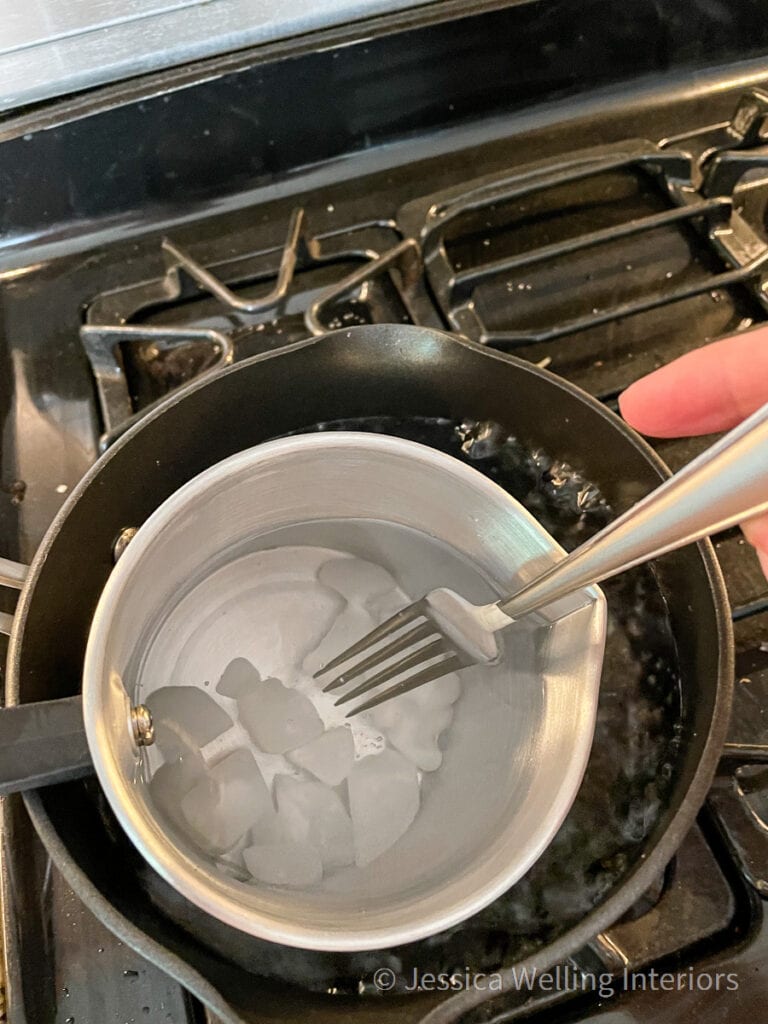
You can also melt it in a glass container in the microwave. Just keep in mind that this type of wax is a serious pain to clean up, so the fewer pots and utensils it touches, the better.
And if you’re planning a larger-scale candle-making operation you’ll want to get a big electric wax melter like this one.
How to Make Paraffin Candles
Here’s a simple paraffin candle tutorial to get you started. You can substitute any fragrance oil and color you like for the citronella in this recipe.
How to Make Citronella Candles
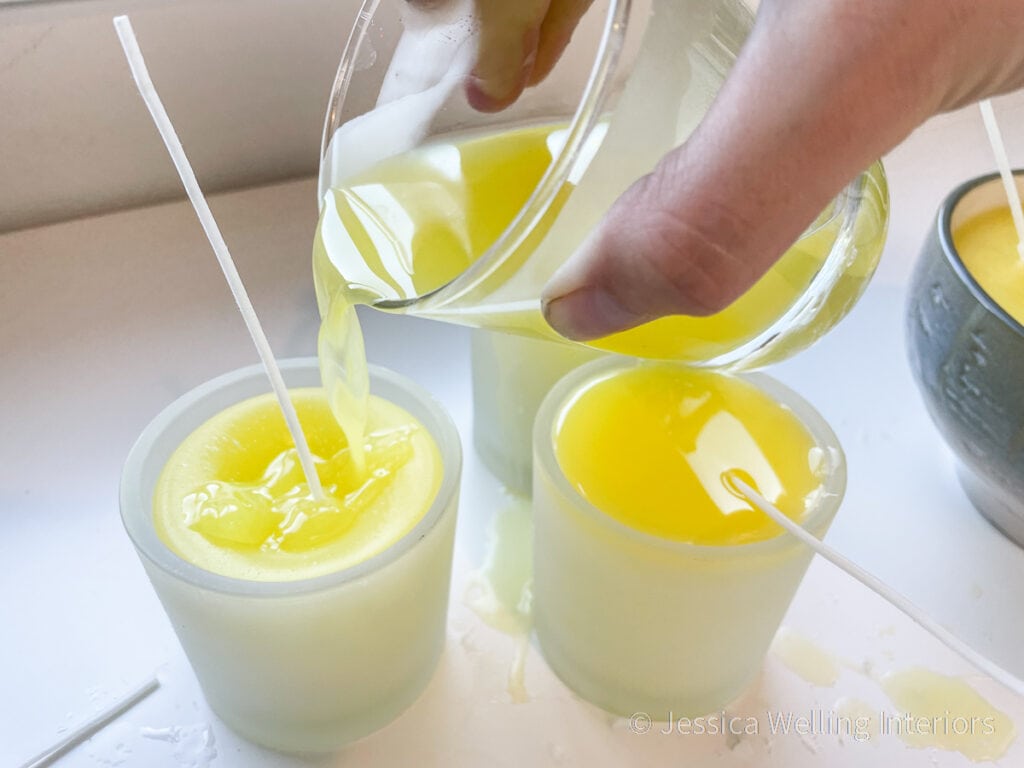
Paraffin Wax Prices
If you want a small quantity of paraffin it’s pricey at around $9.35 per pound. But it is MUCH cheaper in bulk- around $3.84 per pound if you buy 10 pounds.
Melting Point
Paraffin melts in the range of 125 to 165 degrees Farrenheit. Most fragrance oil manufacturers recommend adding the fragrance when the wax is between 180 and 185 degrees. I like to use an inexpensive digital thermometer like this one to check the temperature.
Scent Throw
Here are a couple of candle making terms you’ll come across:
Cold Throw
The amount of fragrance a candle gives off when unlit.
Hot Throw
The amount & strength of fragrance a candle puts out when burning.
These are subjective terms, but in general, paraffin is the best wax of the lot when it comes to holding and then releasing fragrance when burned. Once you begin to experiment, you’ll understand this better.
Fragrance Load
Fragrance load refers to the amount (generally a percentage) of fragrance oil that a particular variety of wax can hold. If you add too much oil, you’ll end up with little pools of it on the top of your candle once the wax is hardened. Not enough oil, and your candle will smell like… well nothing.
Paraffin has a fragrance load between
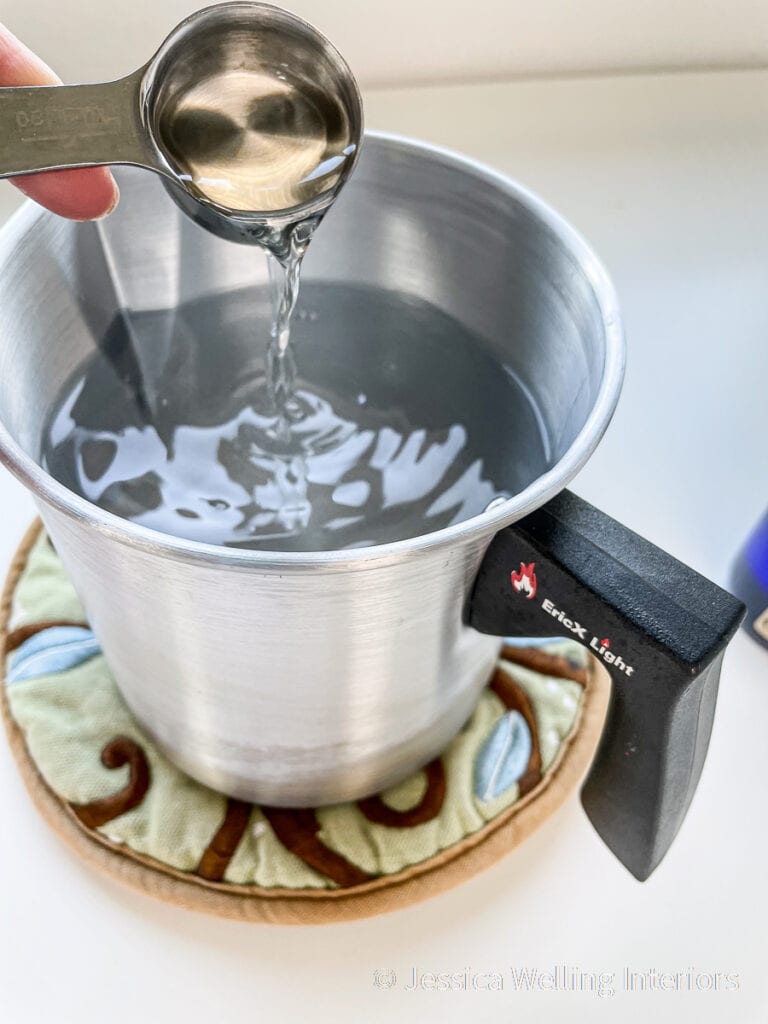
Appearance
Paraffin is slightly translucent in its solid state, so the candles will have a similar appearance.
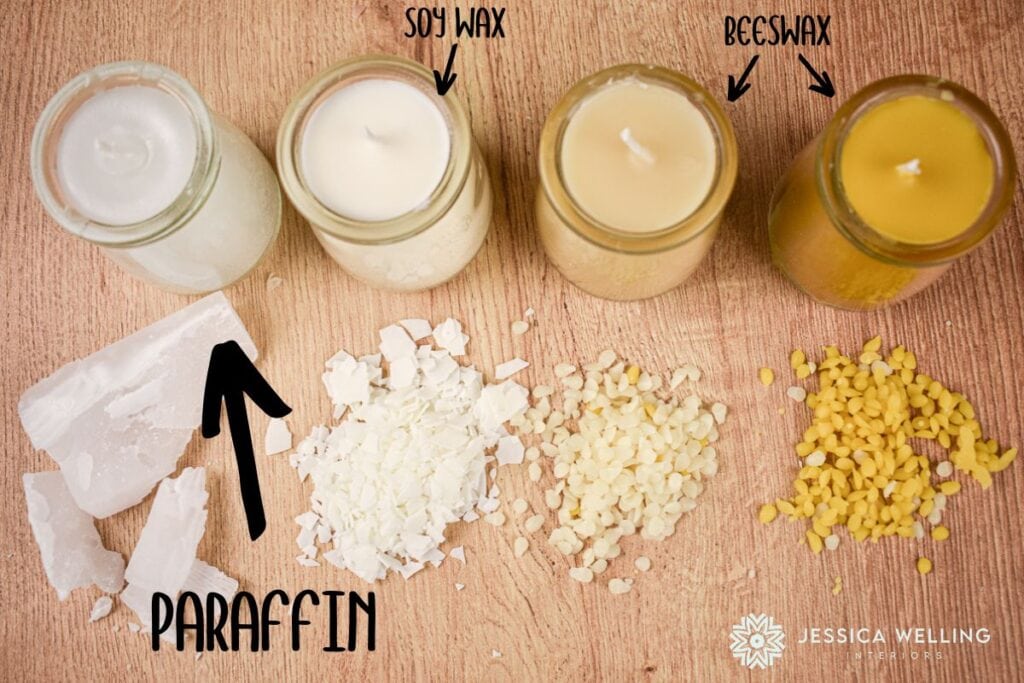
Because of this, it generally produces the deepest and brightest colors when wax dye is added to it.
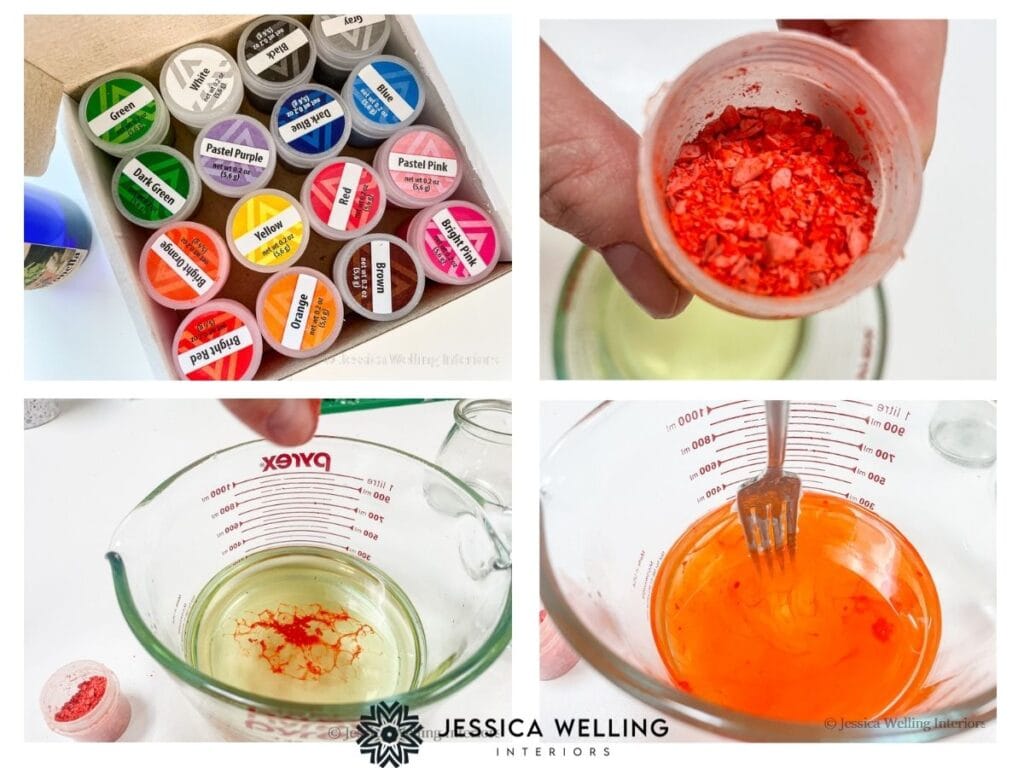
This is my favorite inexpensive wax dye kit from Amazon (pictured above). I like it because each color comes in a resealable container.
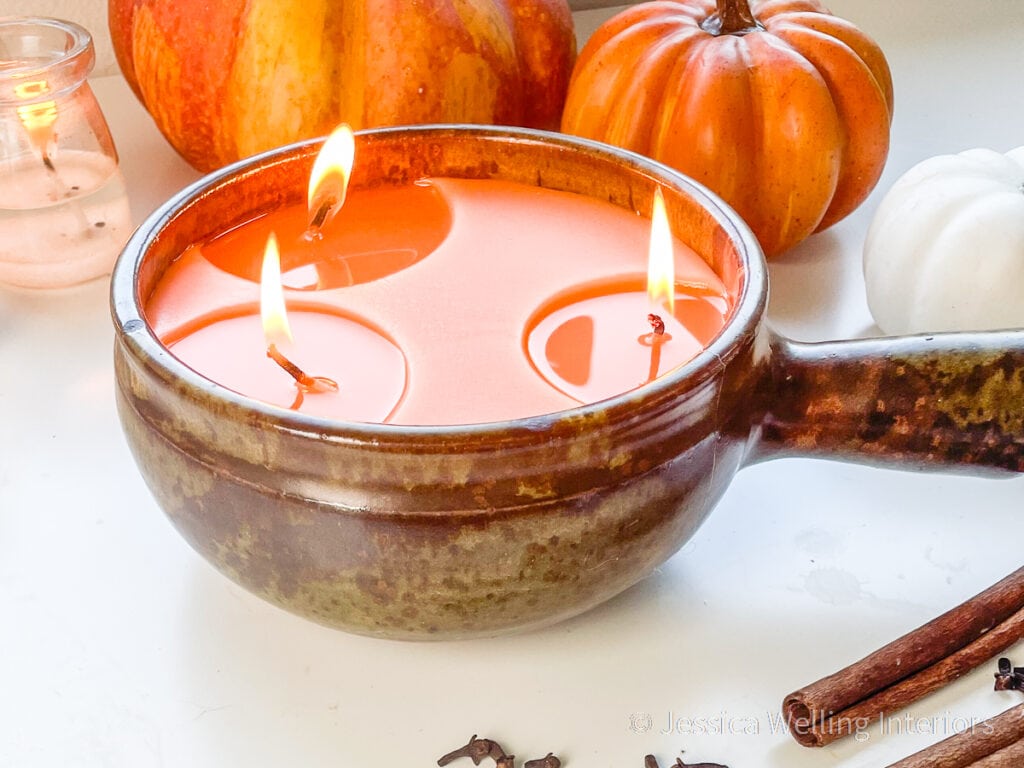
Additives
You will often find paraffin blends with different additives for different applications.
Where to Buy
1lb from Amazon I used this wax for the side-by-side burn test below and it performed well. It comes in quantities of up to 6 lbs., and gets cheaper the more you buy.
10 lbs from Amazon I’ve used this all-purpose paraffin wax for several projects and been very happy with the results.
Paraffin Wax Pros
- inexpensive and readily available
- great scent throw
- works for both container candles and pillar candles
- very versatile
- won’t change and discolor over time
Paraffin Wax Cons
- petroleum product
- bad for indoor air quality
- hard to clean up
- fastest burning wax so candles won’t last as long
Soy Wax
What is Soy Wax?
Soy wax is a form of hydrogenated soybean oil. It has become hugely popular in recent years because soy is a sustainable resource, it’s natural and non-toxic, and therefore safer to burn indoors.
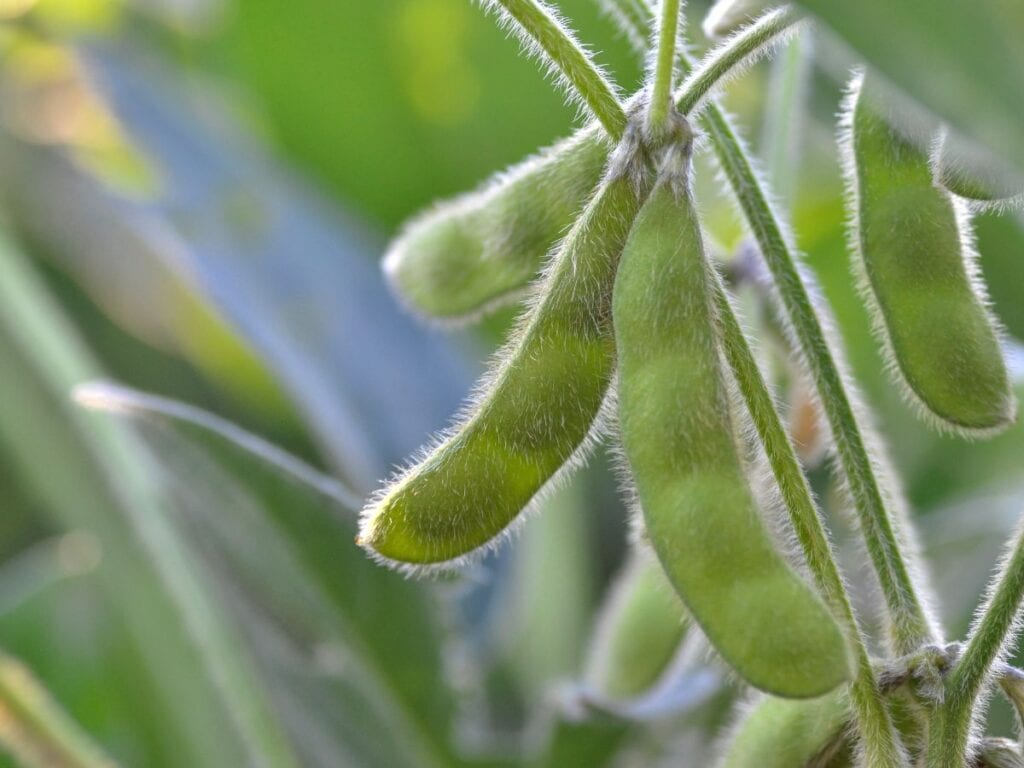
Other plant-derived and vegetable waxes such as coconut wax, palm wax, and rapeseed wax are starting to gain popularity as well, but soy wax candles are by far the most common.
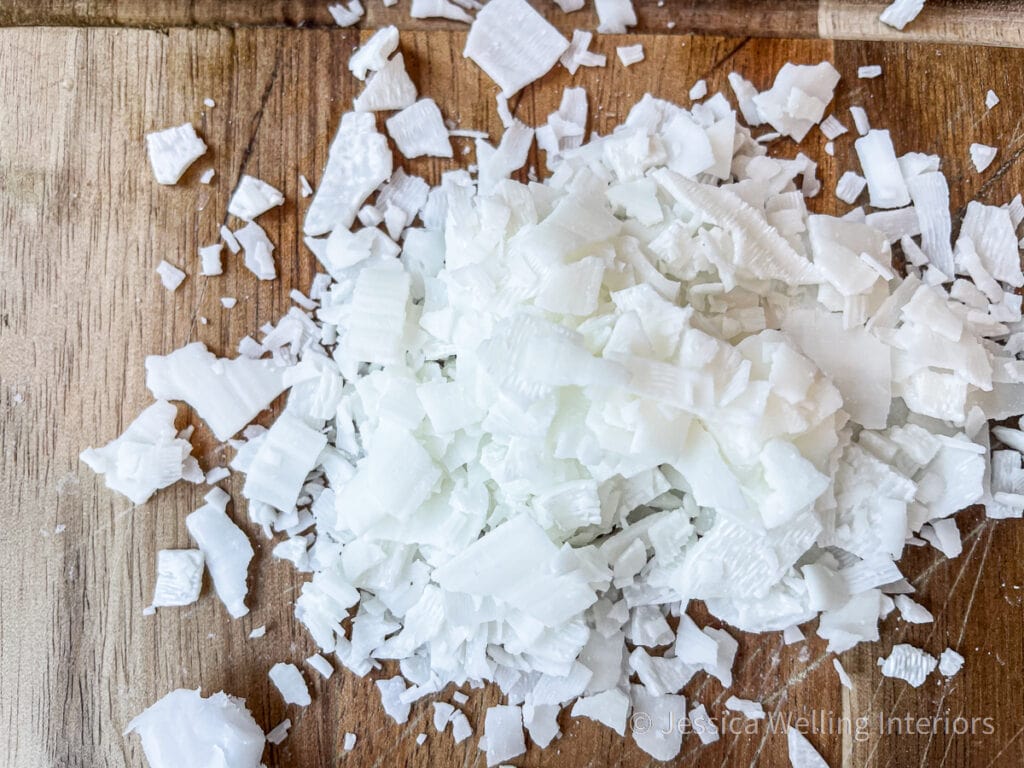
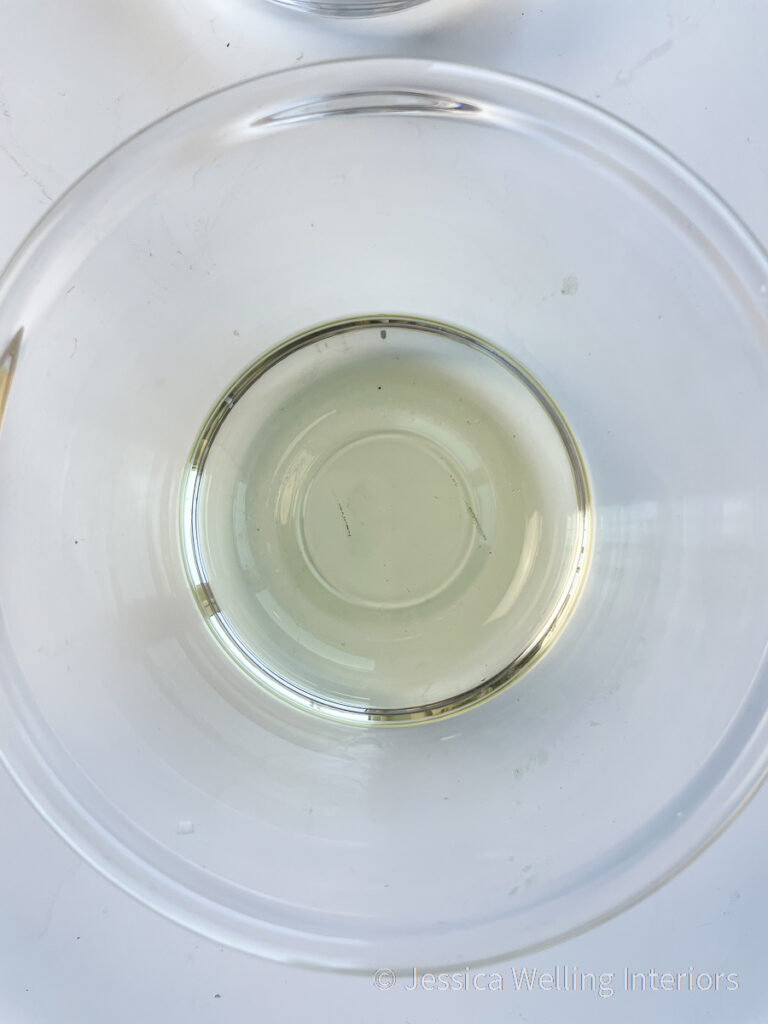
Soy Wax Prices
Soy wax ranges from $11.22/lb for a small quantity, to $3.69/lb for 10 lbs.
Where to Buy
This is my favorite reasonably-priced soy wax brand from Amazon. It comes with cotton wicks and centering devices, which you’ll also need for your container candles. I’ve bought this one many, many times.

I also like Supernatural Soy Flakes from Makesy. They also have fabulous all-natural candle fragrance oils, so if you’re going to order the fragrance oils, the soy wax will help you get free shipping.
How to Make Soy Candles
Here’s a step-by-step soy candle making tutorial:
How to Make Soy Candles: A Beginner’s Guide
How to Melt Soy Wax
I like to melt soy wax in a glass measuring cup in the microwave. It’s quick and easy, and you can wash any utensils you use in the dishwasher. Just heat it in one-minute intervals, taking it out to stir and check the temperature each time. I use this digital meat thermometer to keep tabs on the temperature.
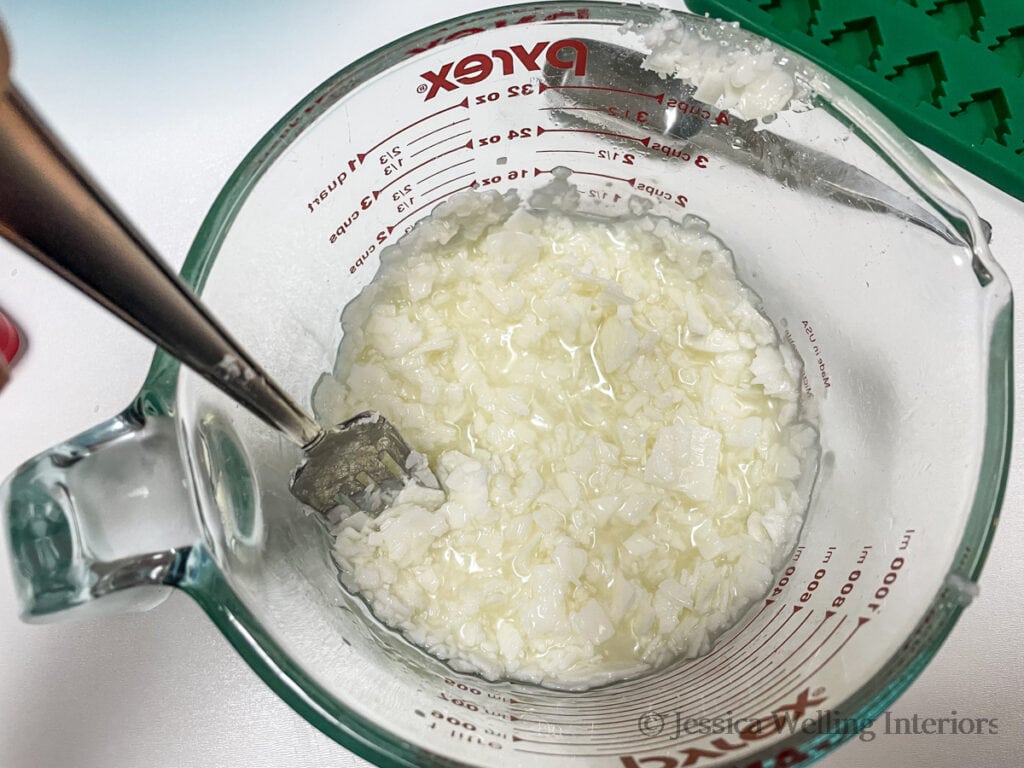
You can also melt soy wax in a double-boiler like the one used for the paraffin wax above.
Appearance
In its solid state, soy wax is a very light cream, almost white. It’s opaque, so while it takes color nicely, it requires more wax dye than paraffin to achieve deep or bright colors.
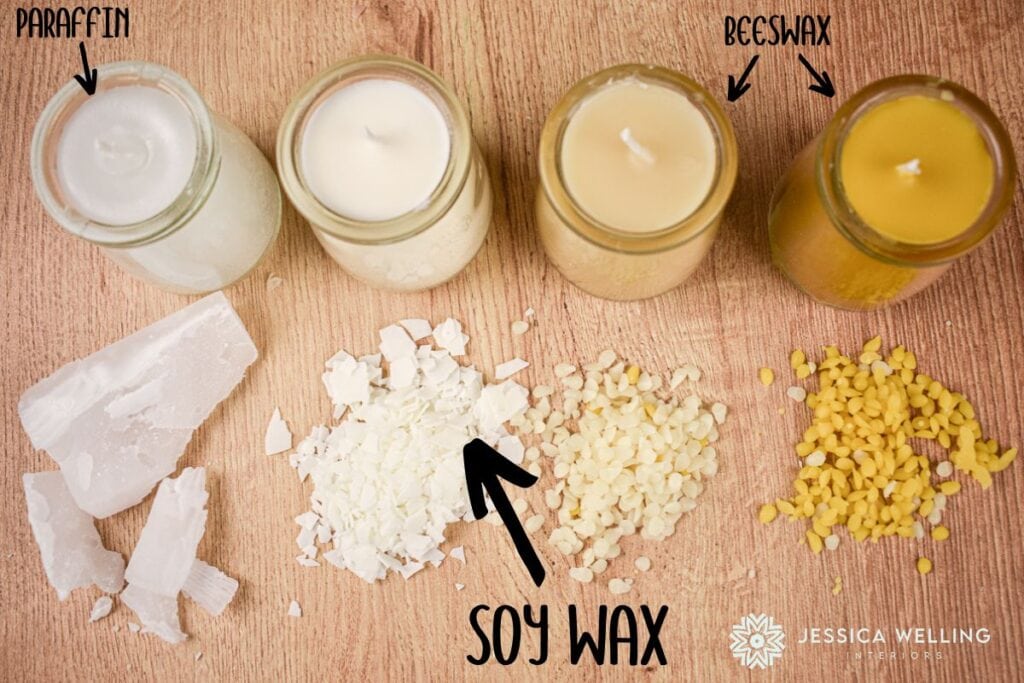
Here’s a Christmas tree scented soy candle with green wax dye added to it. As you can see, it’s much more opaque than the paraffin candles above.
Scent Throw
Soy Wax Pros
- all natural product
- environmentally friendly & sustainable
- inexpensive
- better for indoor air quality
- good scent throw
- easy to work with
- easy to clean up
Soy Wax Cons
- too soft for pillar & molded candles
- can discolor over time
Beeswax
What is Beeswax?
Beeswax is produced by honeybees. It’s a secretion from their abdomens. They use the wax to create honeycomb, which serves as both the structure of the hive and storage compartments for honey.
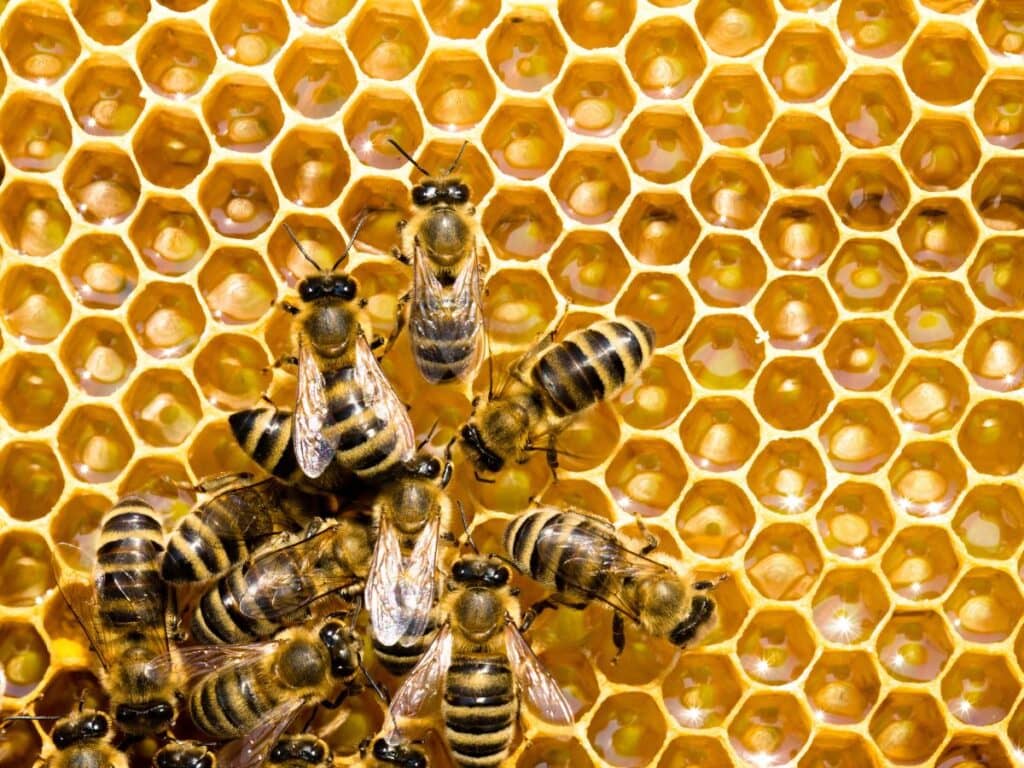
The honeycomb is harvested, drained of honey, and then melted down over hot water to separate out any debris to produce commercially available beeswax for candle making, personal care products, etc.
Since it’s an all-natural product, it can have quite a bit of variation in color, quality, and melting point, which makes it one of the more difficult candle waxes to work with.
And while it is produced in nature and is supposed to be healthy for indoor air quality, beeswax is not considered vegan and many people don’t consider it to be an environmentally friendly option.
Yellow vs. White Beeswax
It comes in two colors- yellow and white, but there’s a bit more to it than that. Both types have gone through a refinement process and been filtered to remove debris and impurities.
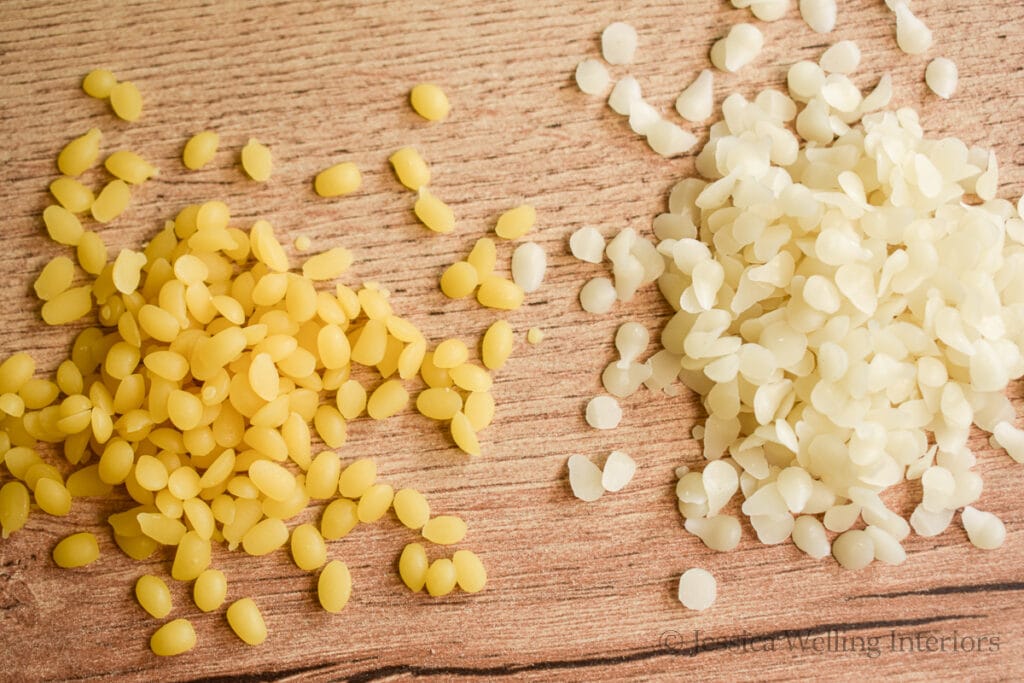
The yellow or sometimes amber-colored beeswax is closer to its natural state. I’ve found that it tends to retain it’s sweet beeswax scent as well, and it will release the fragrance when burned. So most yellow beeswax candles don’t have fragrance oil or wax dyes added to them.
Beeswax Prices
Yellow beeswax tends to cost a bit more than white, averaging $17 per pound for a single pound, to $9.74 per pound when purchased in 10 pound bulk. It comes in both bars and pastilles, but I strongly recommend the pastilles (like the ones pictured above) since they’re MUCH easier to pour and measure. Plus they melt faster. And beeswax takes forever to melt!

White beeswax ranges from an average of $14.63 for one pound, to $3.57/lb for 10 pounds.
It’s refined to remove impurities, and then it goes through a natural bleaching process. It’s generally less fragrant on its own, so it is a better option if you’re wanting to add other fragrances to your candles. I also want to mention that naturally bleached “white” beeswax isn’t truly white. It’s more of a dark cream color (see below).
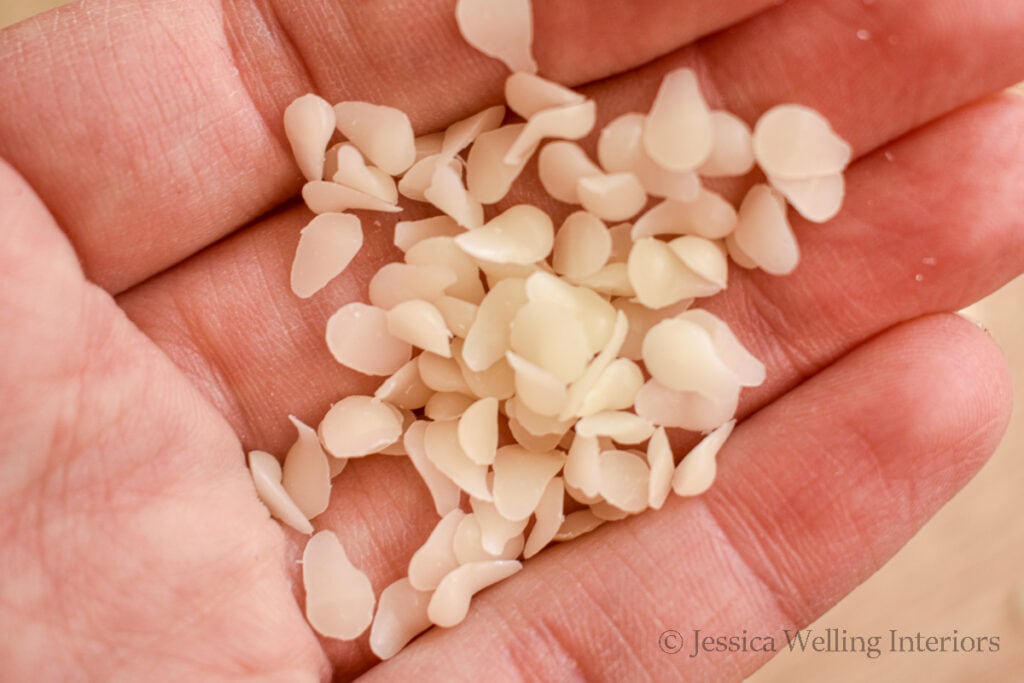

Where to Buy Beeswax
This is my favorite brand of beeswax from Amazon, and it comes in both yellow and white pastilles.
How to Melt Beeswax
For small batches, you can melt beeswax either in a glass measuring cup in the microwave, or in a double-boiler on the stove top (my preferred method). It’s important to keep a close eye on the temperature because it can scorch if it gets above 185 degrees farenheit (85 C).
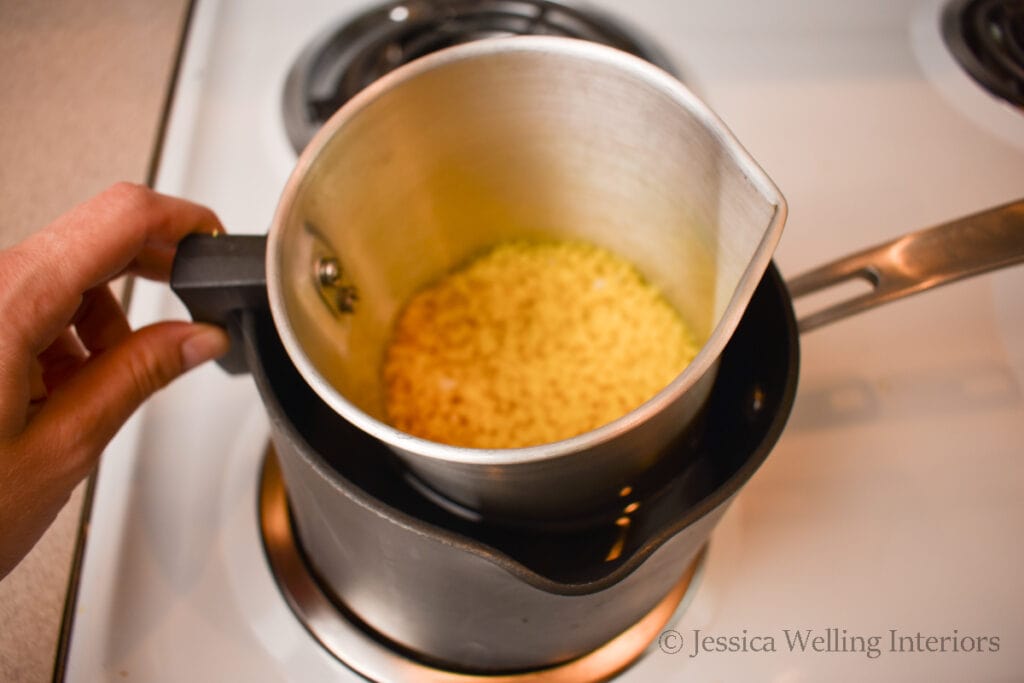
Beeswax is a hard wax and has a high melting point, which means it takes longer to melt than other types of wax. You will also have less time to work with it, as it solidifies very quickly once it’s removed from the heat source. If you’re used to working with soy or paraffin, you’ll definitely notice that the beeswax takes FOREVER to melt!
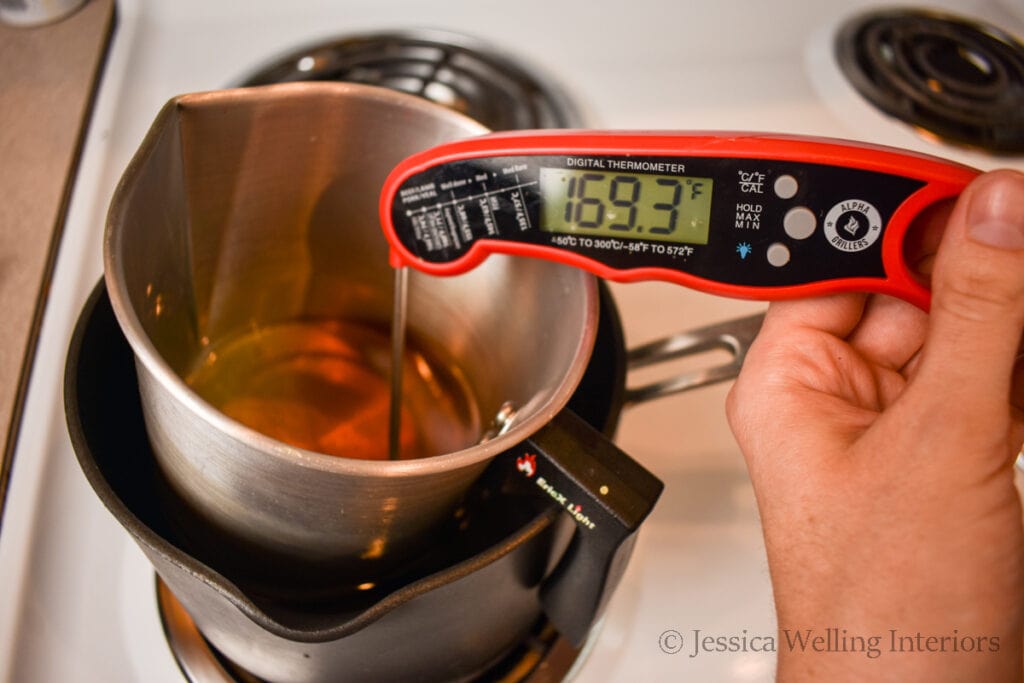
How to Make Beeswax Candles
Here are my tutorials for beeswax candles and wax melts:
Beeswax Pros
- natural & non-toxic
- nice scent
- slowest-burning wax
Beeswax Cons
- most expensive
- not good for the bees
- more difficult to work with because of high melting point
- tunneling is common in beeswax candles
Clean Up
This article would not be complete without discussion of the dreaded clean up after making candles. Aside from the excess wax left behind on your containers and utensils, you’re pretty much guaranteed to have a mess on your counter top too. And I’m assuming you have better things to do than sit around scratching hardened wax off of everything.
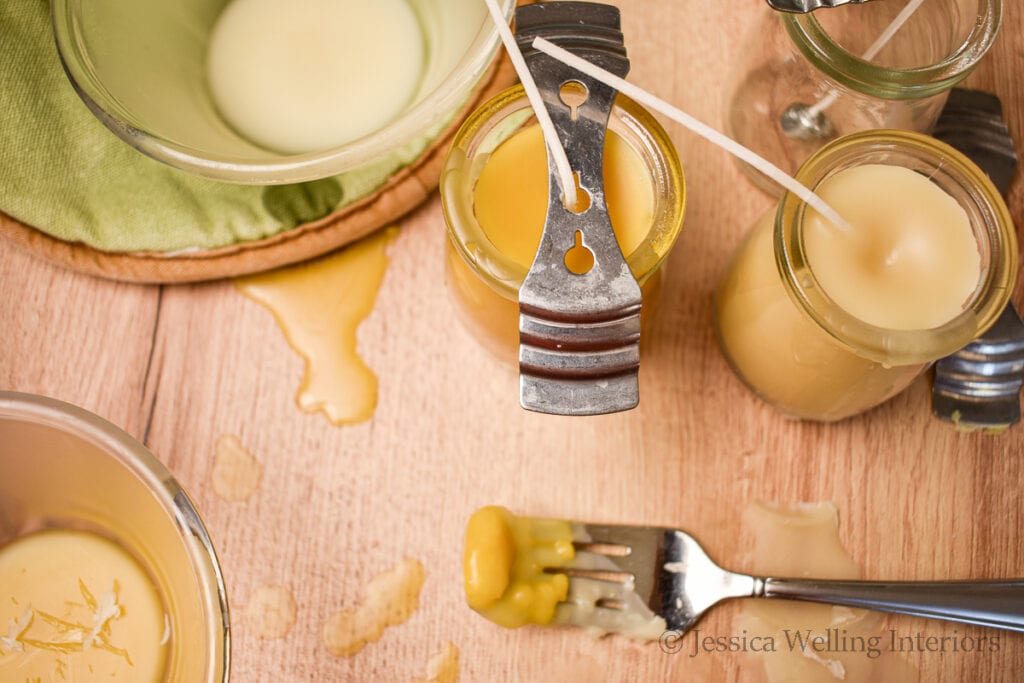
I like to use a counter scraper like this one for easy clean up. Totally worth it and you’ll use it for other kitchen messes too! This is effective with every type of wax I’ve worked with.
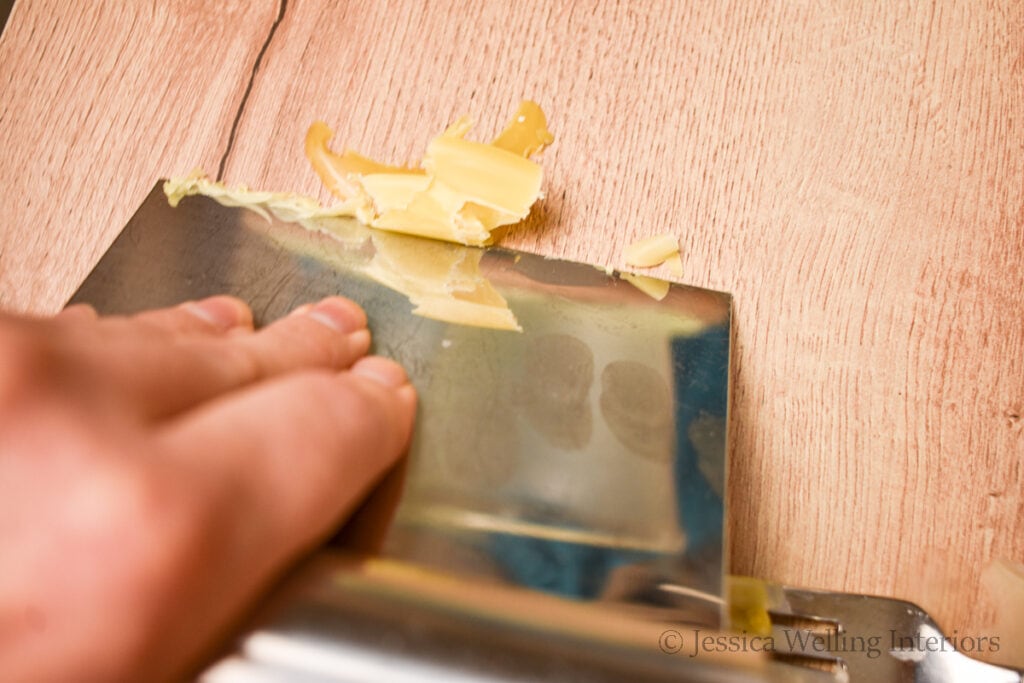
One of my favorite things about soy wax is that it cleans up with soap and water. I actually just remove the excess wax and throw my utensils in the dishwasher.
Unfortunately the clean up is a bit more difficult with paraffin and beeswax.
Burn Test
I made four basic candles with identical glass jars and wicks to test the performance of the different waxes side-by-side and to show their flames and burn rates.
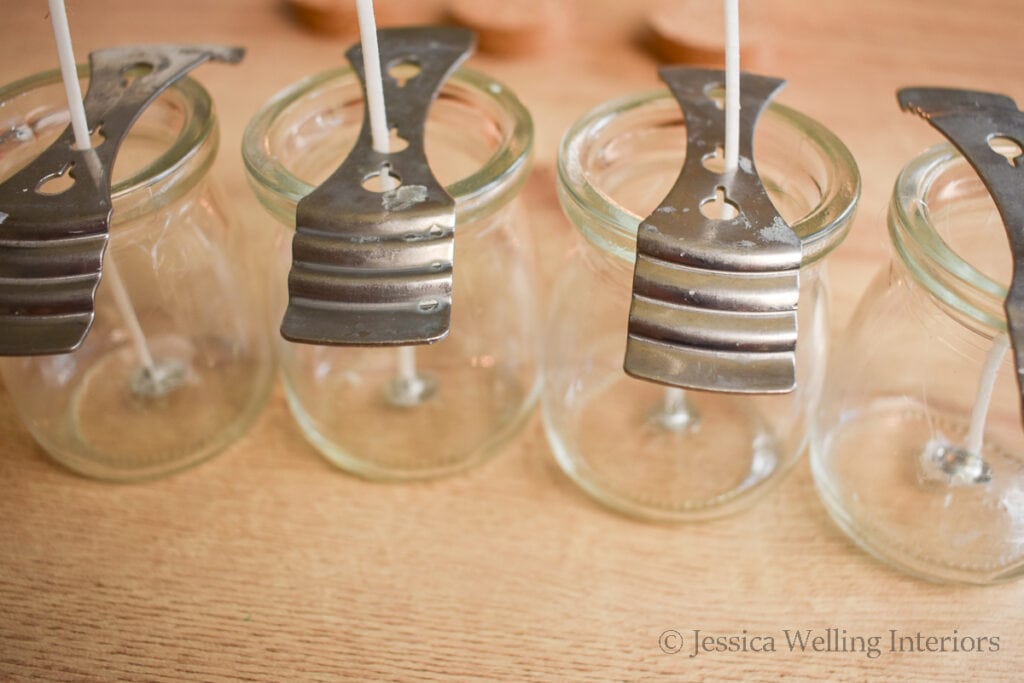
These are pure forms of each wax and they do not have any fragrance oil or wax dye added to them.
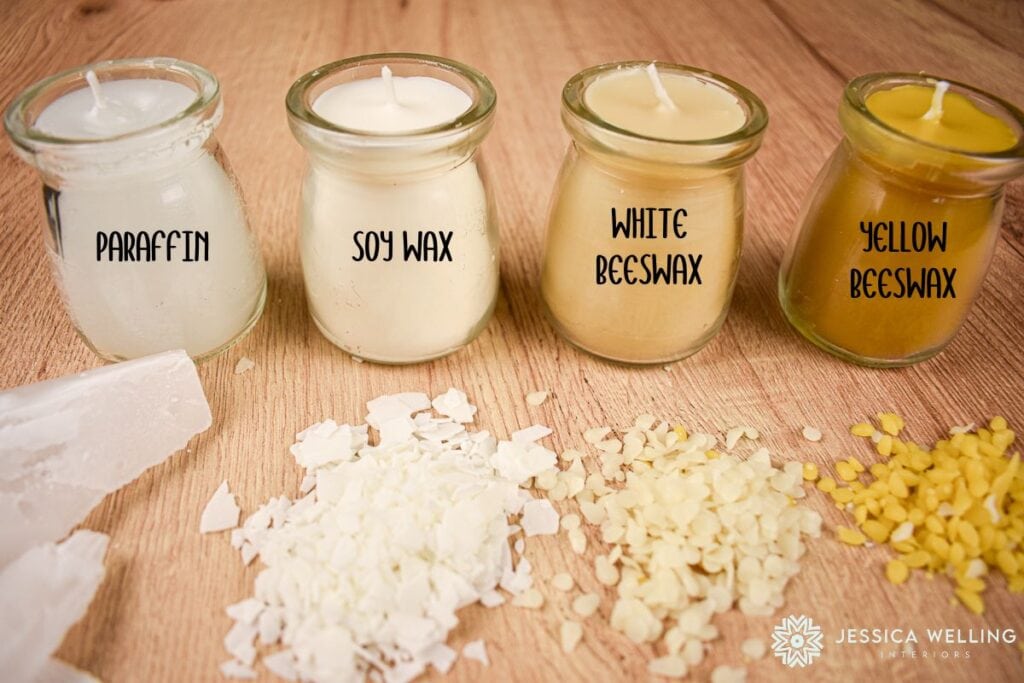

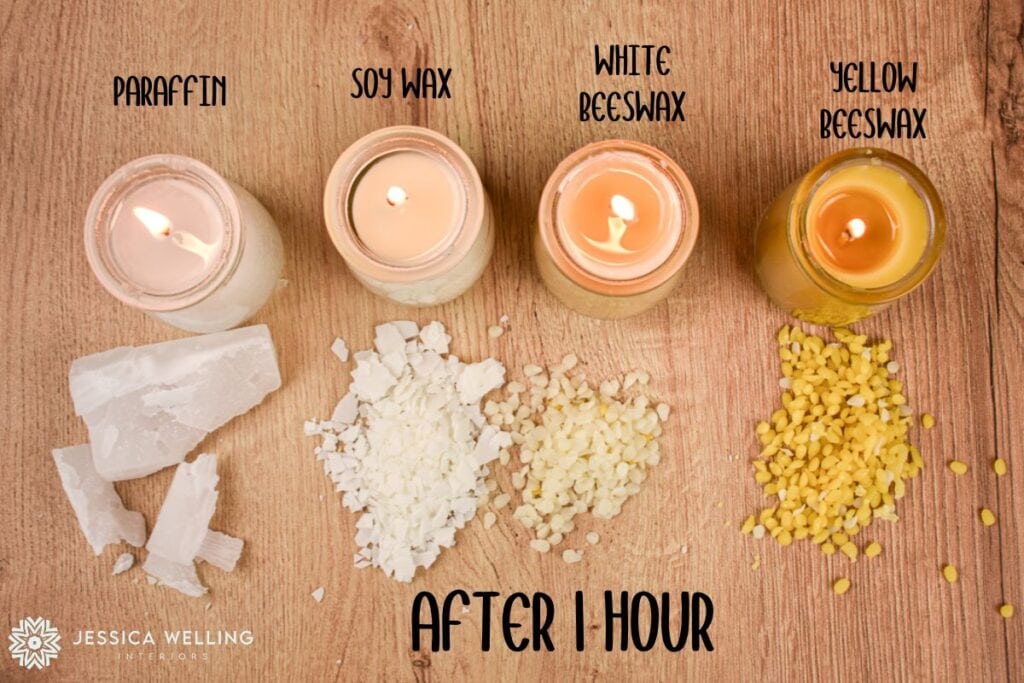
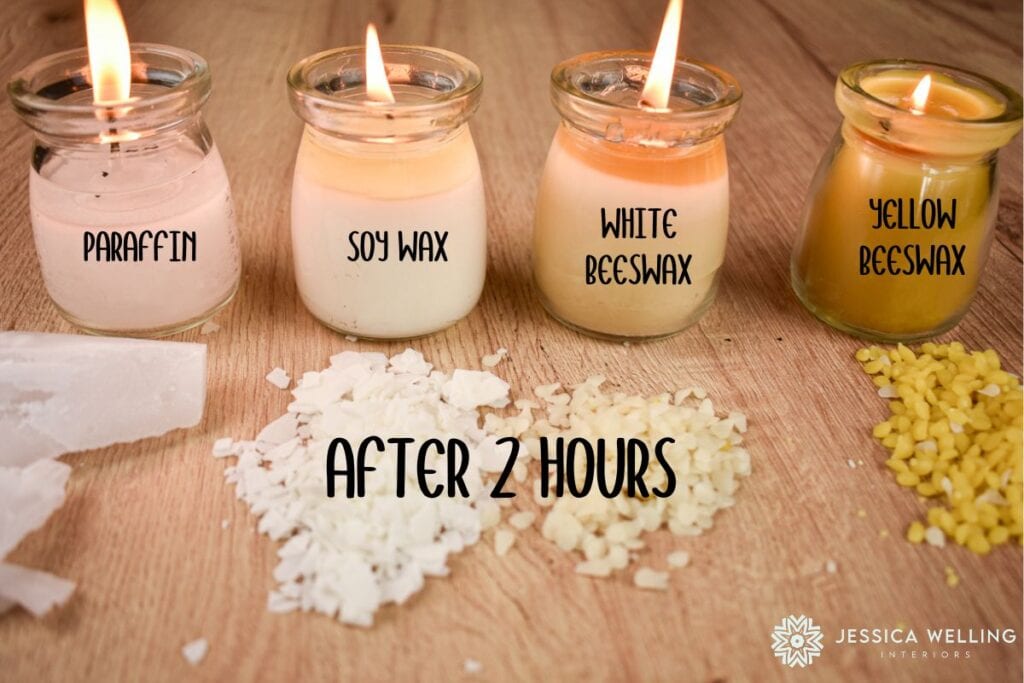

Observations
This was an interesting experiment because although I’ve worked extensively with these waxes, this was my first time observing them side-by-side. I was a little surprised by a few of the results, so I made another batch to double-check that my results weren’t just a fluke. Here’s what I noticed:
- The paraffin candles had the tallest flames, flickered the most, and produced the most visible smoke. They also left the most soot on the jar. They also both cracked the glass jars they were in while burning.
- The yellow beeswax candles always had the smallest flames the smallest wax pools that never reached all the edges of the containers. So even though beeswax is the slowest-burning wax, it didn’t really make for longer-lasting candles, since a lot of the wax was wasted.
- The paraffin burned the fastest by far
- The flame colors looked to be about the same for all four candles
What’s the Best Wax for Candles?
After A LOT of experimenting over the past few years, I’ve decided that soy wax is my favorite for general purpose candles and wax melts. Aside from price and general health benefits, it is by far the easiest to clean up. And that is a pretty big deal for me.
I hope you found this guide helpful! Let me know which is your favorite wax and why in the comments!
More DIY Candles & Wax Melts…
How to Make Soy Candles: A Beginner’s Guide
The Best Fragrance Oils for Candles (That Actually Smell Good!)
The Best Candle Jars & Tins & Where To Get Them
How to Make Wax Melts: Everything You Need to Know
How to Make Candles Smell Stronger: 6 Tips for Great Scent Throw

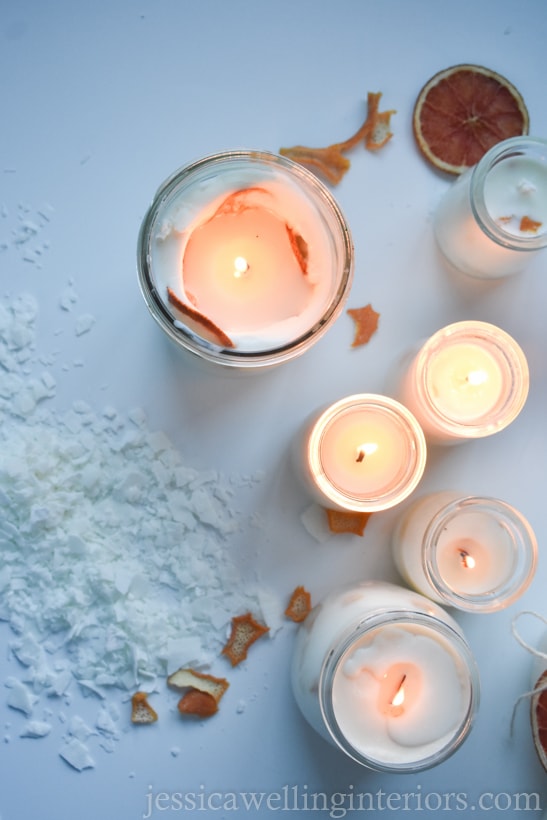
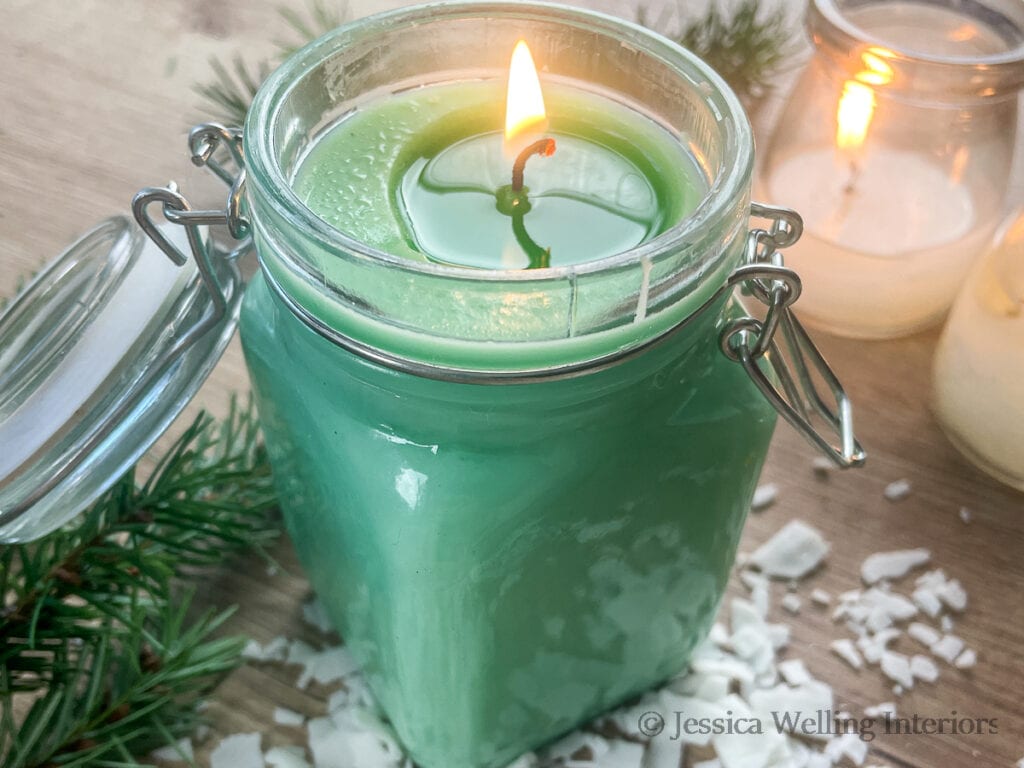
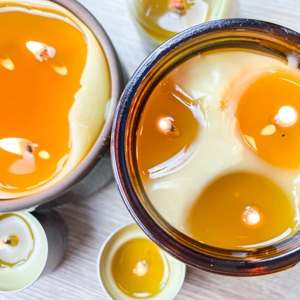
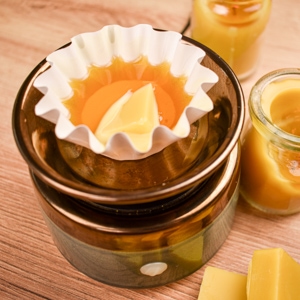
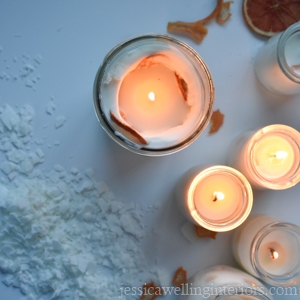
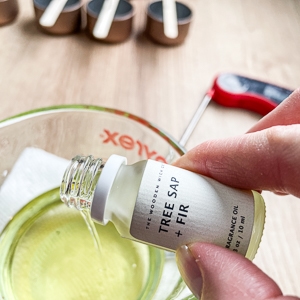
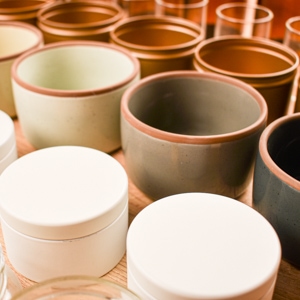
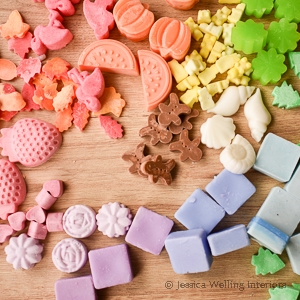
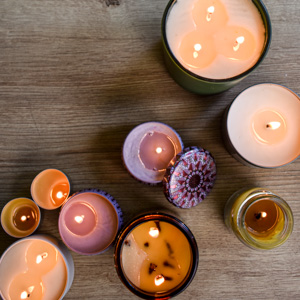
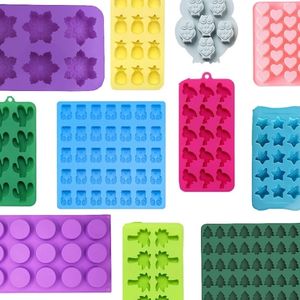
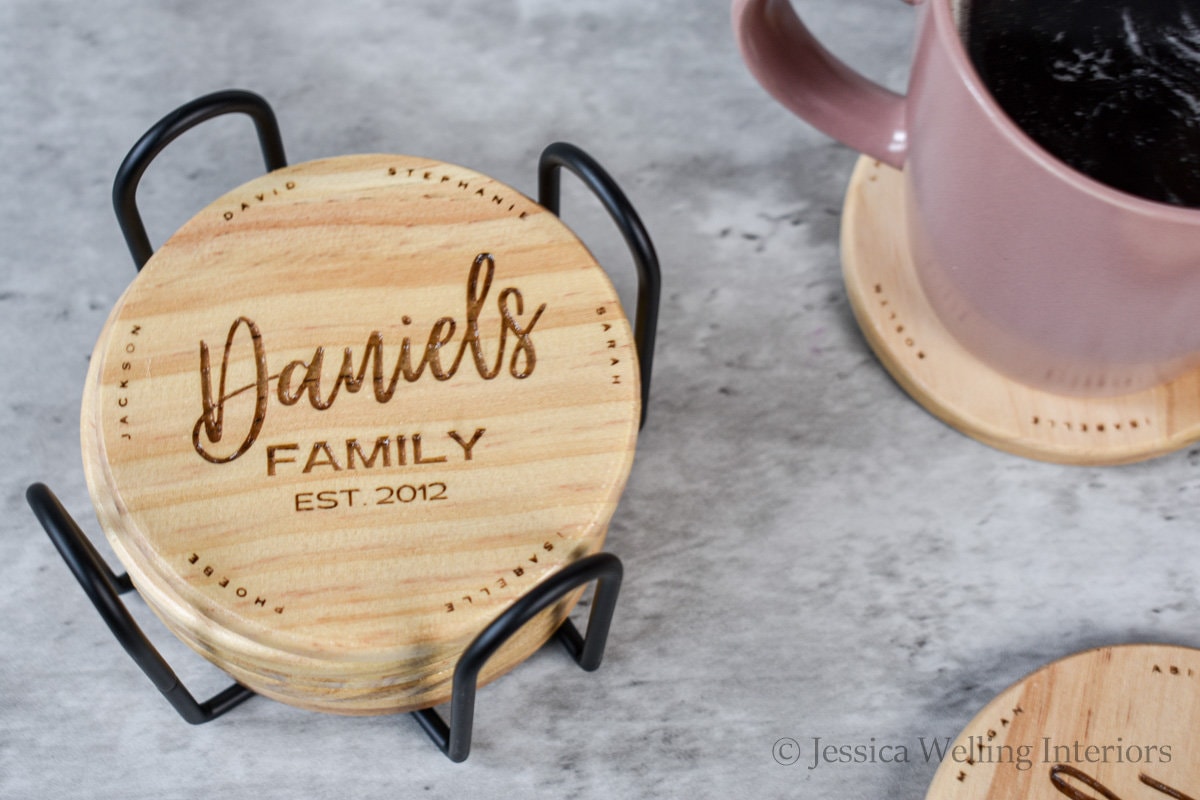

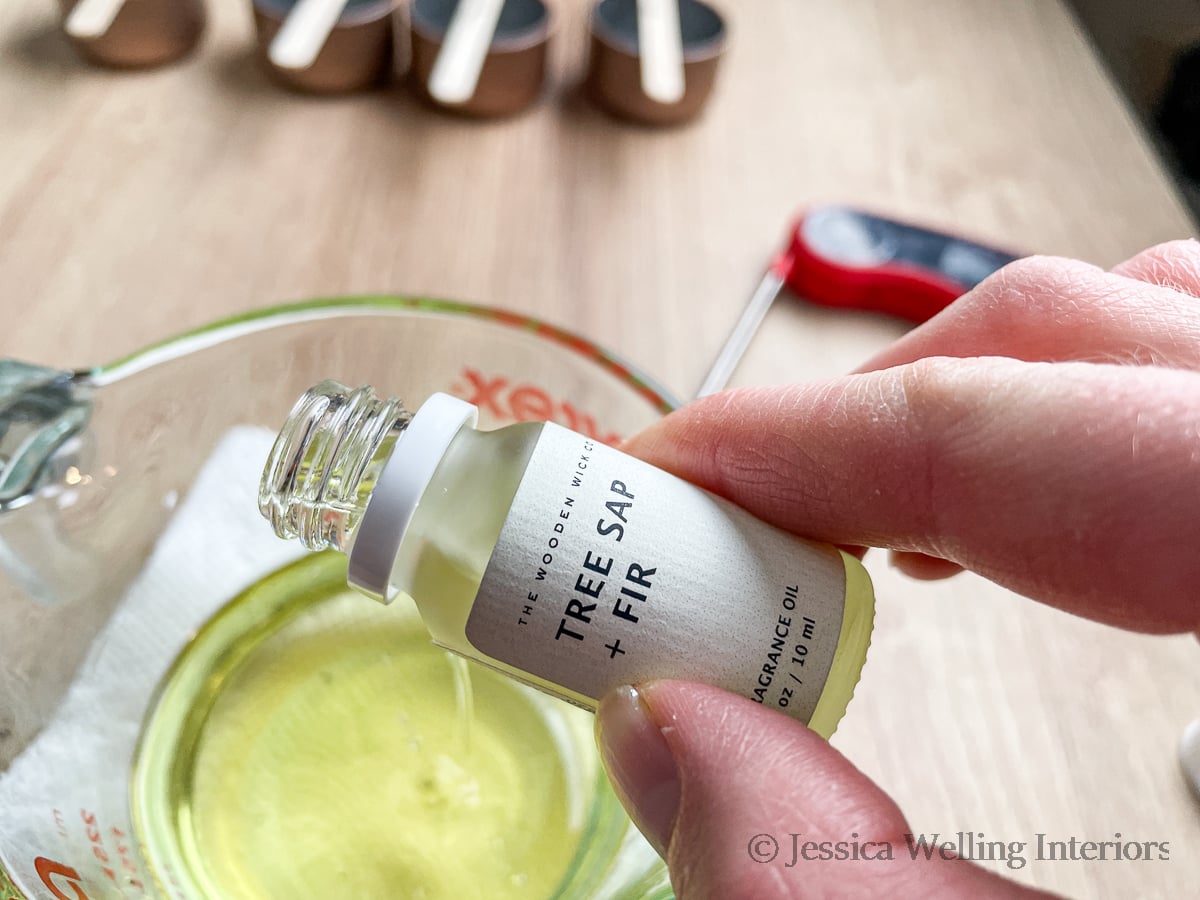
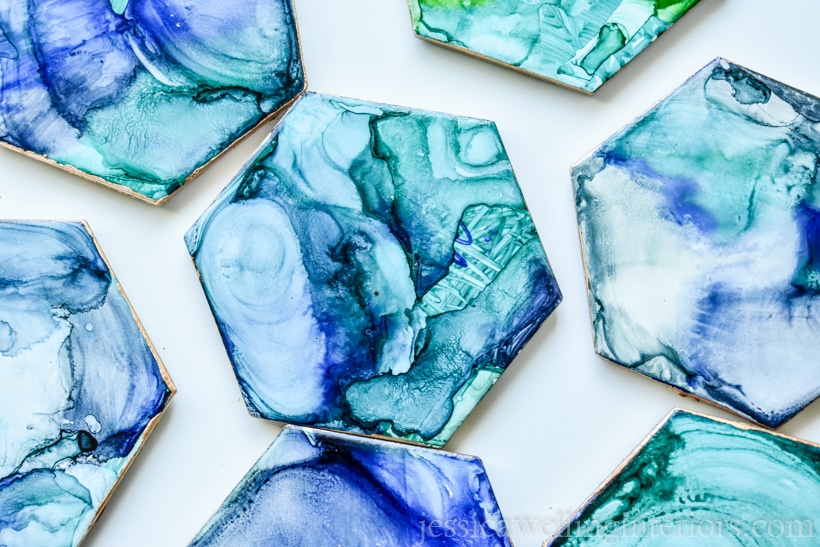
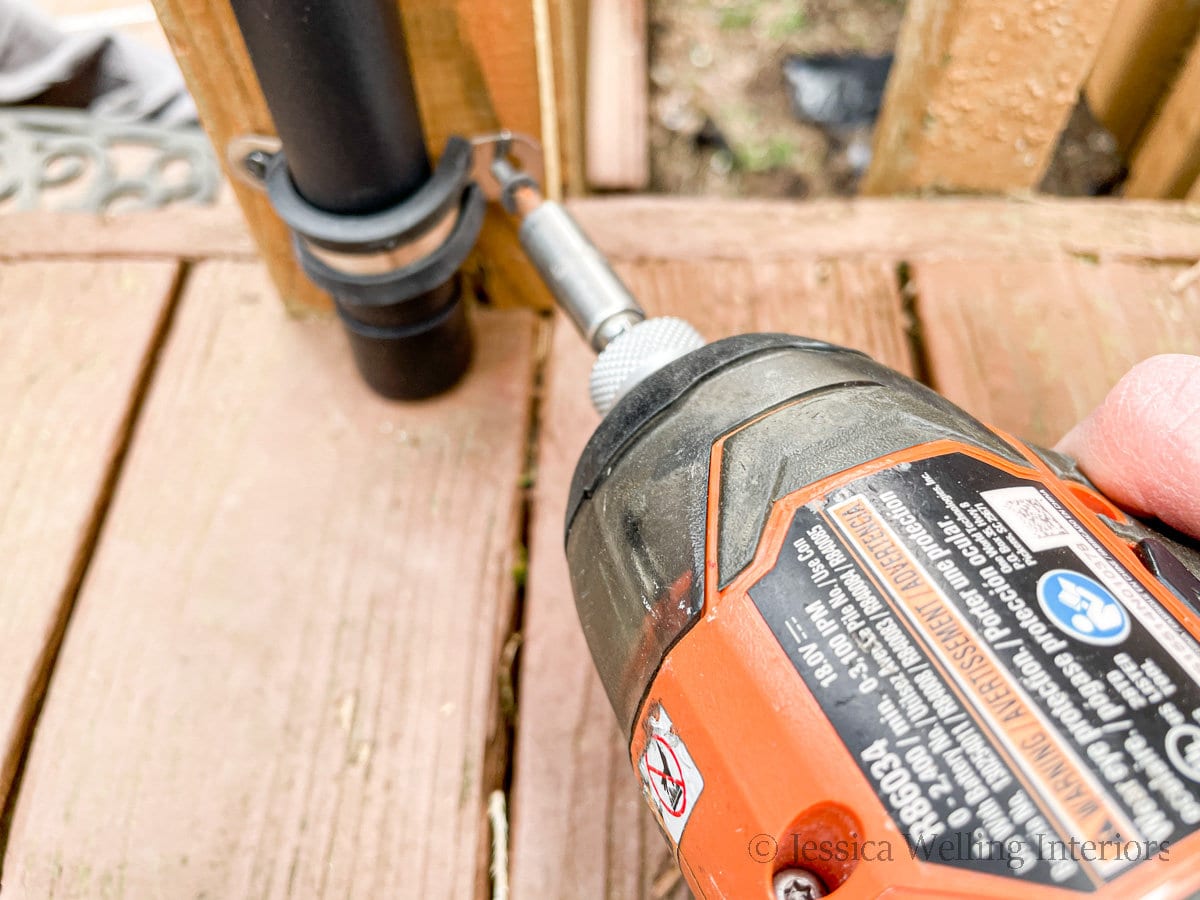
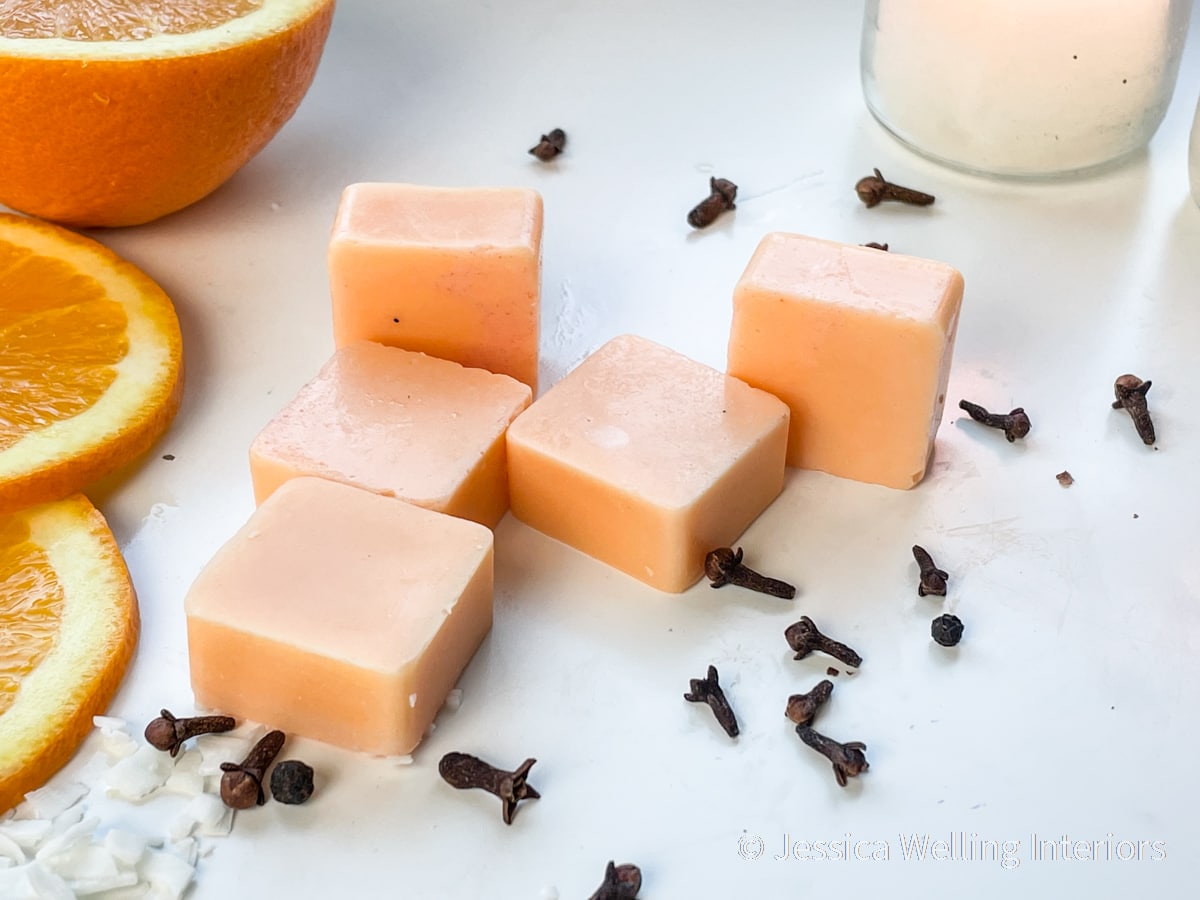
I’m really enjoying your page! I have learned more about making candles in just two of your posts than I have trying to dive through the internet. Thank you!
Thank you so much! That is great to hear.
Great information. Thanks!
You’re very welcome!
Nice post